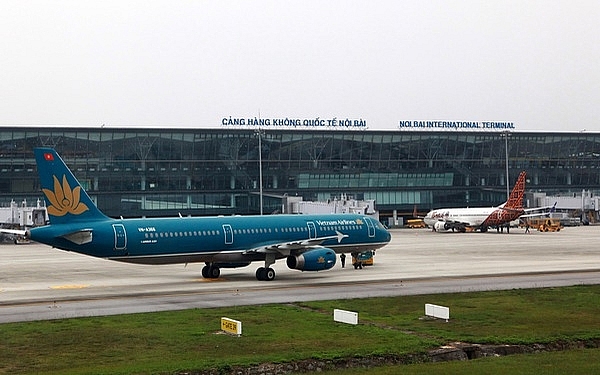VN’s air transportation strives to make ASEAN’s top four by transport volume
 |
| VN’s air transportation strives to make ASEAN’s top four by transport volume |
The move aims to make Viet Nam’s air transportation market among the top four markets in the ASEAN region in terms of transport volume, whilst developing fleets of aircraft in the direction of applying technological and technical advances.
The revised plan also seeks to develop a system of airports with a designed capacity meeting the transportation demand, together with establishing and developing three ASEAN-level centers for passenger and cargo transportation.
The passenger transport market is targeted to grow 16% annually in the 2015-2020 period and 8% in the 2020-2030 period, while the cargo transport market aims for an annual growth of 18% and 12% for the periods of 2015-2020 and 2020-2030, respectively.
Under the plan, the transport volume of Vietnamese airports will reach approximately 64 million passengers and 71 billion passenger-kilometers, and 570,000 tons of cargo and 5.2 billion ton-kilometers by 2020. The figures will be 131 million passengers and 125 billion passenger-kilometers, and 1.7 million tons of cargo and 17 billion ton-kilometers, respectively, by 2030.
By 2020, the transport volume via the airports is expected to hit roughly 131 million passengers and 2.2 million tons of cargo per year, while the combined designed capacity of airports will reach 144 million passengers and 2.5 million tons of goods annually.
A system of 23 airports targeted until 2020
The plan targets to exploit a system of 23 airports, including 13 domestic ones and 10 international ones, by 2020, with the four airports of Noi Bai, Da Nang, Tan Son Nhat and Cam Ranh being the international gateways.
By 2030, Viet Nam will exploit a system of 28 airports, including 15 domestic ones and 13 international ones, with the five airports of Noi Bai, Da Nang, Cam Ranh, Tan Son Nhat and Long Thanh being the international gateways.
Viet Nam Airlines in the key air transport force
The restructuring of State-owned enterprises will be accelerated until 2020, aiming to create favourable conditions for air enterprises to participate in and operate in the field of aviation under the socialist-oriented market mechanism.
Efforts will be strengthened to develop the national flag carrier, Vietnam Airlines, as a key air transport force, with its international competition capacity among the leading groups of the ASEAN region.
The plan also seeks to renovate and improve the operational efficiency of the Vietnam Air Traffic Management Corporation (VATM), aiming to ensure that the management and supply of flight management services in the Ha Noi and Ho Chi Minh City Flight Information Regions meet the standards set by the International Civil Aviation Organization (ICAO).
What the stars mean:
★ Poor ★ ★ Promising ★★★ Good ★★★★ Very good ★★★★★ Exceptional
Related Contents
Latest News
More News
- VAL inaugurates second production line to meet domestic animal feed demand (December 19, 2025 | 16:37)
- Sun Group pioneers urban tram system in Phu Quoc (December 19, 2025 | 15:00)
- Top 10 notable events of Vietnam’s industry and trade sector in 2025 (December 19, 2025 | 14:00)
- Seven major projects launched to drive Hanoi’s next growth phase (December 19, 2025 | 14:00)
- Rare, beautiful, sustainable: the mark of iconic real estate (December 19, 2025 | 08:00)
- Mondelez Kinh Do - a chapter of purpose-led leadership in Vietnam (December 18, 2025 | 09:44)
- VNPAY services receive the highest-level PCI DSS international security certificates for six consecutive years (December 17, 2025 | 23:47)
- F&N deepens investment in Vinamilk (December 17, 2025 | 09:00)
- Long-term capital seen as key hurdle to green growth (December 16, 2025 | 08:00)
- HDS Summit spotlights Vietnam’s rising role in regional supply chains (December 16, 2025 | 08:00)

 Tag:
Tag:






















 Mobile Version
Mobile Version